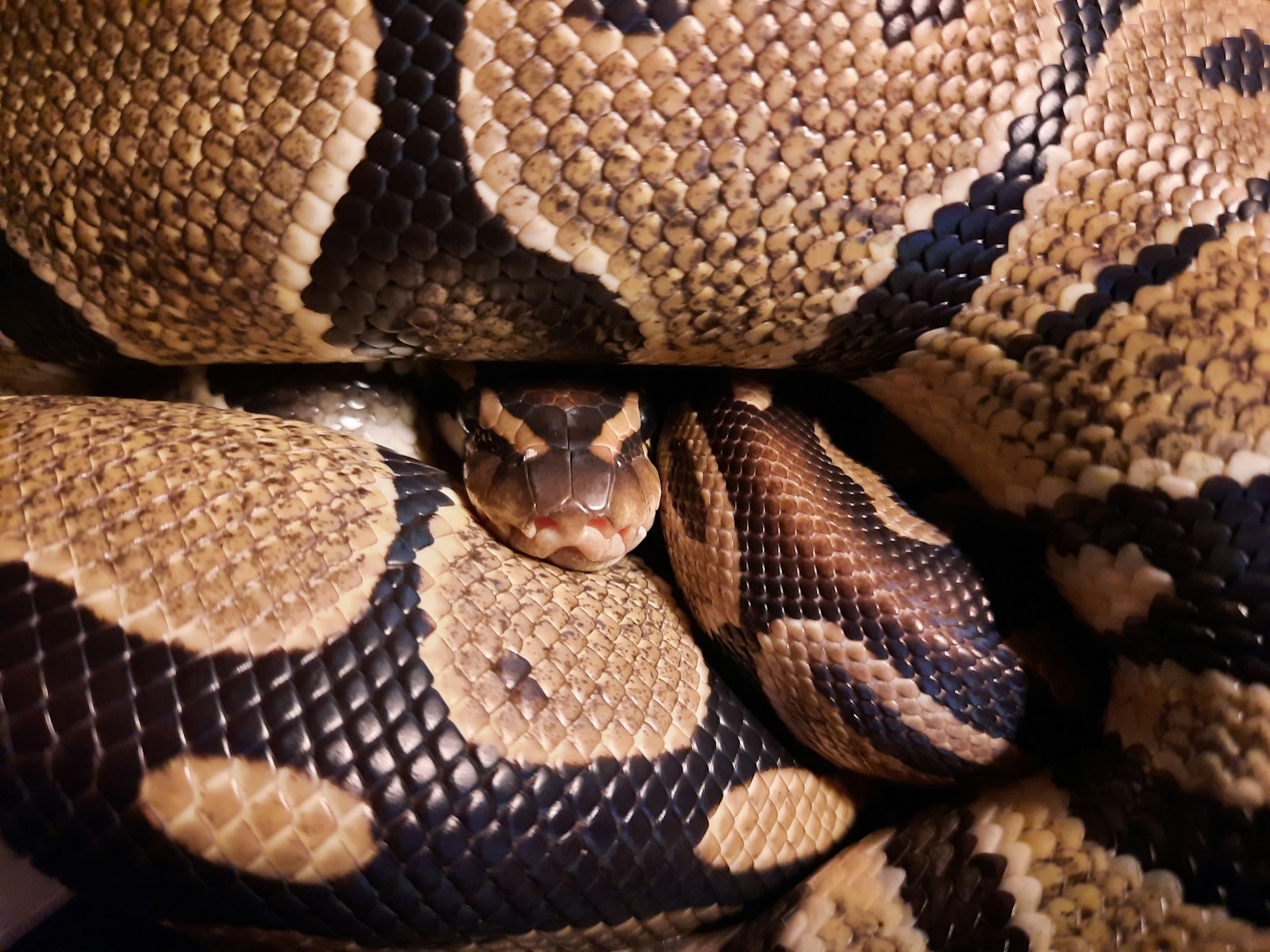Snakes, those mesmerizing reptiles with their sinuous movements and piercing gazes, harbor numerous behavioral mysteries that continue to fascinate herpetologists and pet owners alike. One particularly intriguing aspect of snake behavior is their apparent preference for specific sleeping locations. Unlike mammals that might change sleeping spots regularly, many snake species demonstrate remarkable fidelity to particular resting places, returning to the same location day after day, sometimes for weeks or months. This sleeping spot consistency isn’t random but stems from a complex interplay of evolutionary adaptations, environmental factors, and individual preferences. Understanding why snakes choose and stick with specific sleeping locations provides valuable insights into their survival strategies and can help reptile enthusiasts better care for their slithering companions.
Thermoregulation: The Primary Driver
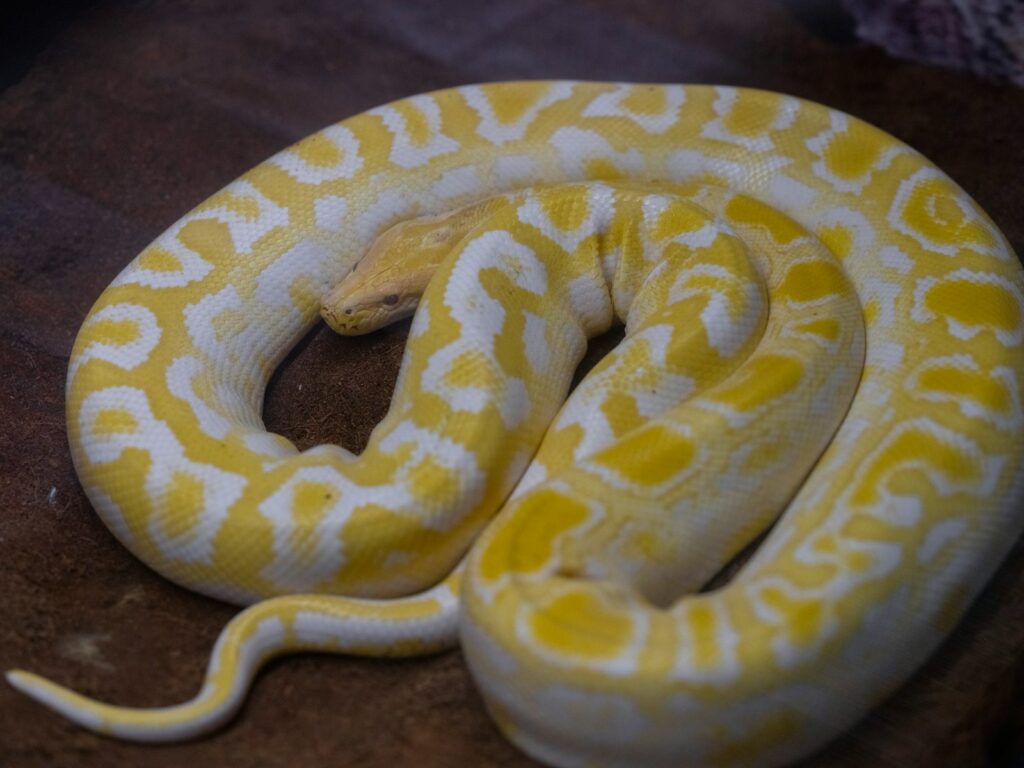
As ectothermic (cold-blooded) creatures, snakes rely entirely on external heat sources to regulate their body temperature, making the selection of an appropriate resting spot crucial to their survival. A snake will carefully select a location that provides optimal thermal conditions – not too hot that it risks overheating, yet warm enough to maintain metabolic functions. Once a snake discovers a spot with ideal temperature characteristics, it’s likely to return repeatedly rather than gambling on finding another suitable location. In captivity, this behavior is often observed when snakes consistently return to areas near heat lamps or heated rocks that maintain perfect temperatures. Some species have been documented returning to the same sun-dappled rock or warm soil patch in the wild for consecutive weeks when environmental conditions remain stable.
Security and Predator Avoidance
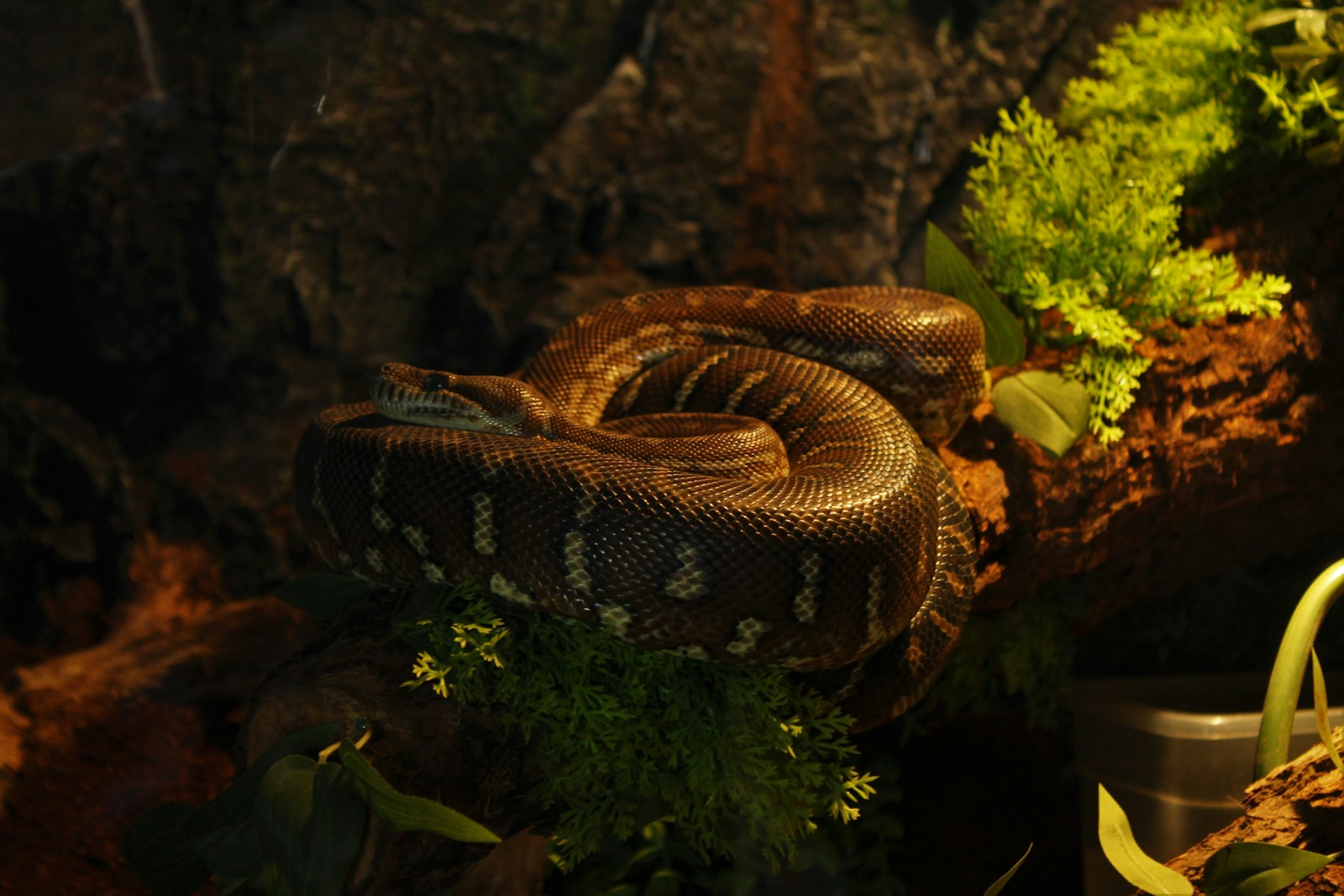
Snakes are acutely aware of their vulnerability while sleeping and select resting spots that offer maximum protection from potential predators. A secure sleeping location might include tight crevices, dense vegetation, underground burrows, or elevated positions that limit access from multiple directions. Once a snake identifies a location where it has repeatedly remained safe and undisturbed, it develops a strong association between that spot and security. This psychological connection to safety can be so powerful that even captive snakes with no predation risk will demonstrate strong preferences for concealed sleeping areas. Some species like ball pythons become notably stressed if their favorite hiding spot is removed, refusing to eat or showing increased defensive behaviors until a suitable alternative is provided.
Scent Marking and Familiarity
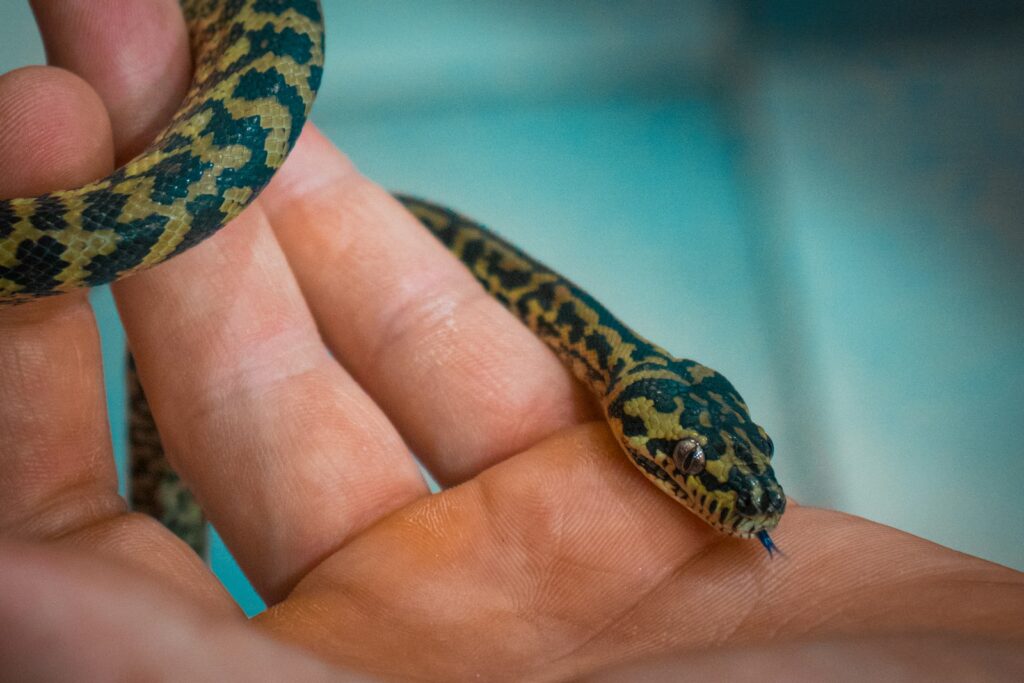
Snakes possess a sophisticated olfactory system and rely heavily on scent for navigation and recognition of their environment. When a snake spends time in a particular location, it leaves behind pheromones and scent markers that create a sense of familiarity and ownership. Returning to a spot containing their own scent provides comfort and reduces stress, similar to how humans might feel more at ease in their own beds. This scent-marking behavior is particularly evident in captive settings, where snakes may become visibly agitated if their enclosures are cleaned too thoroughly, removing all familiar scents. Researchers have observed that providing items with the snake’s own scent during habitat changes significantly reduces stress behaviors and helps them adapt more quickly to new environments.
Microhabitat Optimization
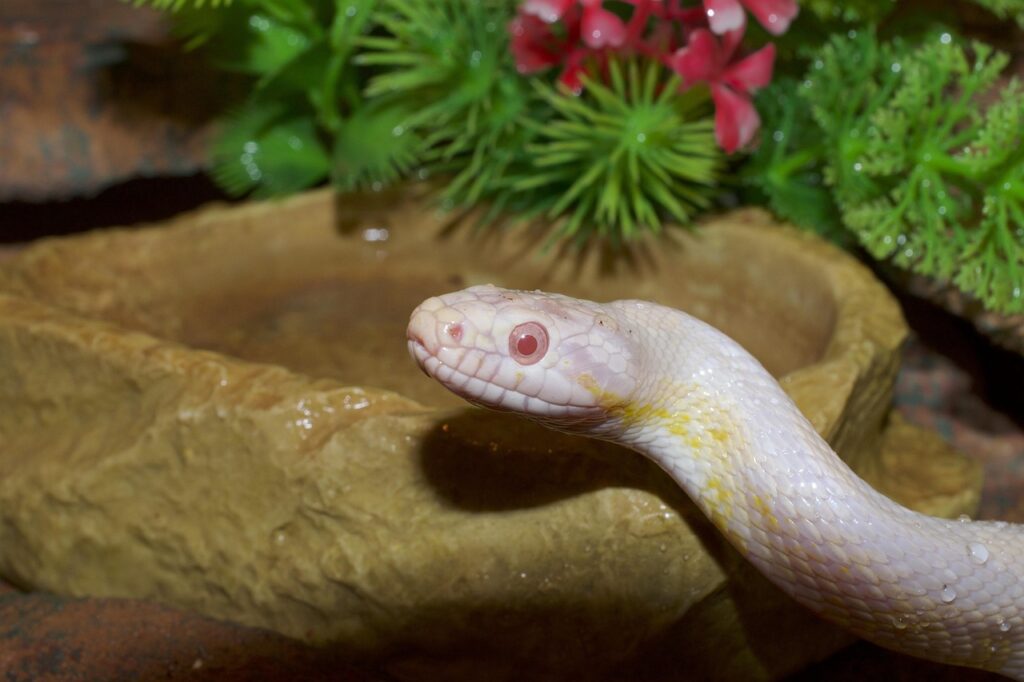
Beyond basic temperature needs, snakes seek out sleeping locations that offer optimal microhabitat conditions, including specific humidity levels, substrate textures, and air circulation patterns. Different snake species have evolved preferences for particular environmental conditions that support their physiological needs – desert species prefer drier areas, while tropical species seek higher humidity. Once a snake locates a spot that meets its precise microhabitat requirements, the evolutionary advantage lies in returning rather than constantly searching for new locations. Some species demonstrate remarkable sensitivity to environmental parameters; for instance, certain tropical snake species consistently select sleeping spots with 70-80% humidity while avoiding nearly identical locations with slightly lower moisture levels. This selectivity explains why pet snakes often have a favorite hide box even when multiple identical options are provided.
Energy Conservation Strategy
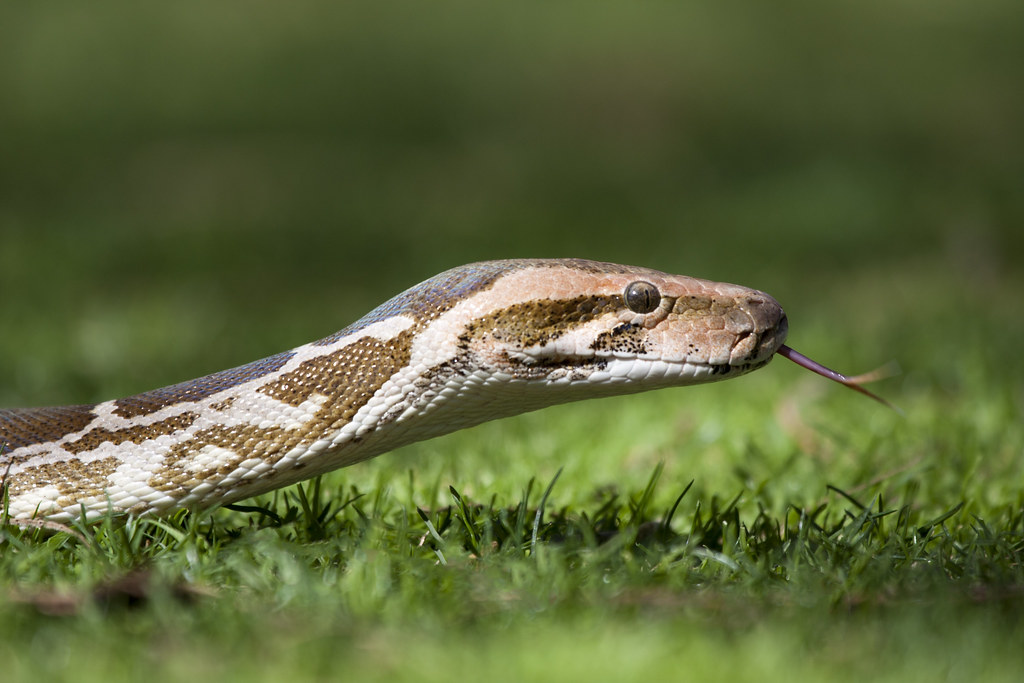
Snakes have evolved to be energy-efficient predators, often going days or weeks between meals. Consistently returning to proven sleeping spots represents a significant energy-saving strategy compared to expending calories searching for new locations daily. By memorizing the location of a suitable sleeping spot, snakes eliminate the need for daily exploration and the associated risks of predator encounters or environmental hazards. This behavioral adaptation is particularly important for ambush predators like vipers and pythons, who may remain virtually motionless for extended periods while waiting for prey. Field studies have documented individual snakes returning to the same ambush locations for weeks, moving only briefly to capture prey before returning to their established waiting positions.
Seasonal Considerations and Hibernation Sites
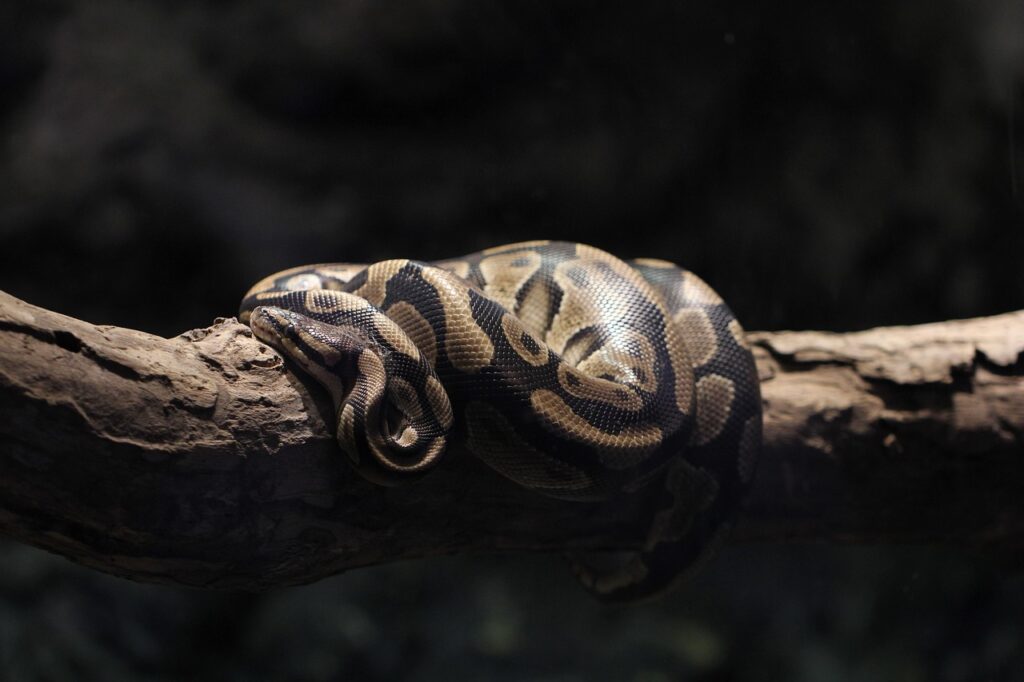
The consistency of a snake’s sleeping location often changes with seasonal shifts, with the most dramatic example being hibernation or brumation sites. Snakes invest considerable energy locating ideal overwintering locations that provide appropriate temperature stability, protection from freezing, and security from predators. Once a successful hibernation site is discovered, many snake species will return to the exact same location year after year, sometimes traveling considerable distances to reach these proven safe havens. Research tracking timber rattlesnakes has shown individuals returning to the same rocky den sites for over a decade, with some hibernacula (winter dens) being used by snake populations for centuries. This extraordinary site fidelity demonstrates how powerful location memory can be when linked to survival during vulnerable periods.
Cognitive Mapping Abilities
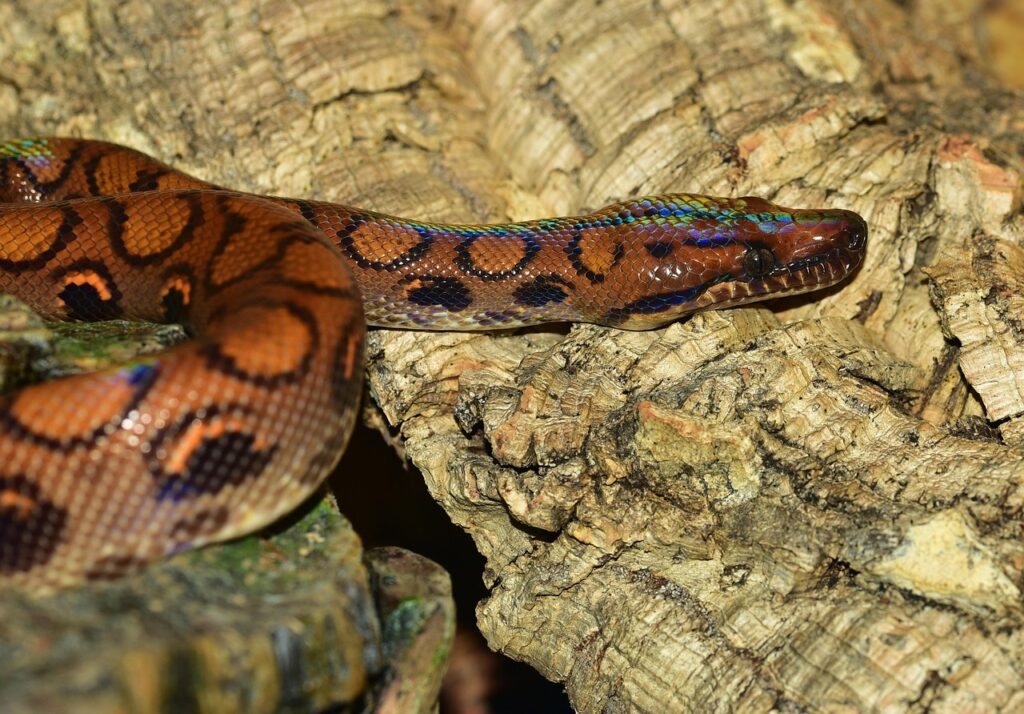
Contrary to outdated beliefs about reptilian intelligence, modern research has revealed that snakes possess sophisticated spatial cognition and can create detailed mental maps of their environment. These cognitive abilities allow snakes to remember successful locations and navigate efficiently between hunting grounds, basking spots, and sleeping areas. Corn snakes in experimental settings have demonstrated the ability to solve spatial puzzles and remember solutions for months, indicating impressive memory capabilities. Field studies using radio telemetry have tracked wild snakes following nearly identical paths through complex environments day after day, suggesting they’re relying on memorized landmarks rather than random exploration. This cognitive mapping ability explains how snakes can return to specific sleeping spots even after temporary disturbances or seasonal migrations.
Individual Temperament and Personality
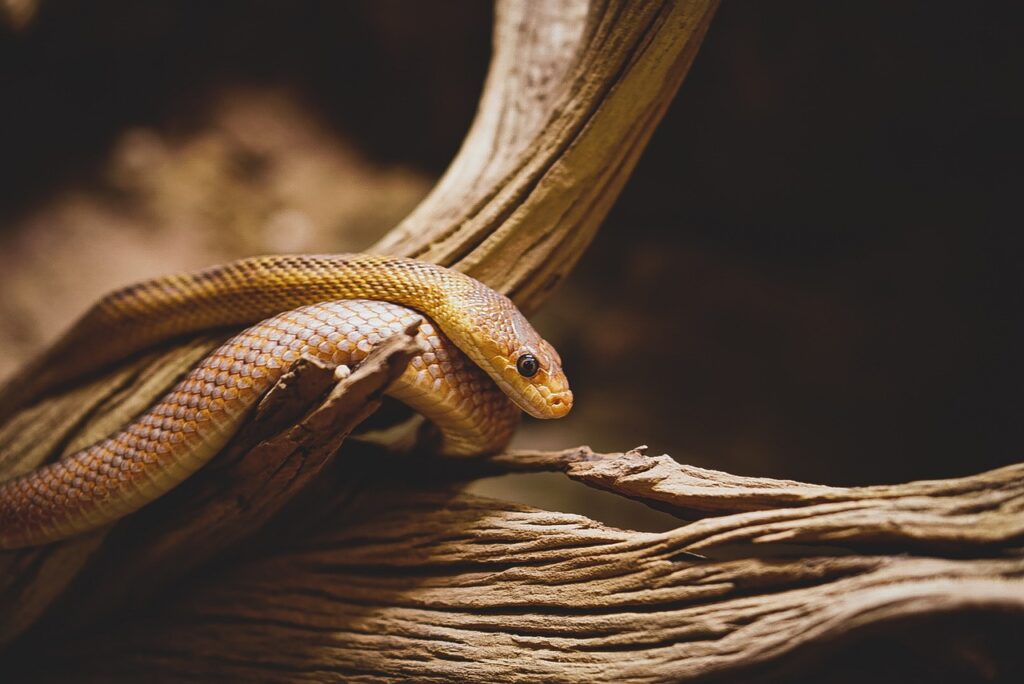
Recent herpetological research has increasingly recognized that snakes, like mammals, display individual personality traits and behavioral tendencies that affect their habitat preferences. Some individuals exhibit naturally higher levels of neophobia (fear of new things) and are therefore more likely to return to familiar sleeping spots rather than explore alternatives. Other individuals may show greater boldness and willingness to utilize varied locations. These personality differences are particularly evident in captive settings where different snakes of the same species and size may exhibit completely different hide preferences. Some individuals consistently choose elevated perches while their siblings prefer ground-level hides, despite identical options being available to both. These individual variations suggest that sleeping spot selection isn’t purely instinctual but also reflects personal preferences and temperament.
Response to Environmental Disturbance
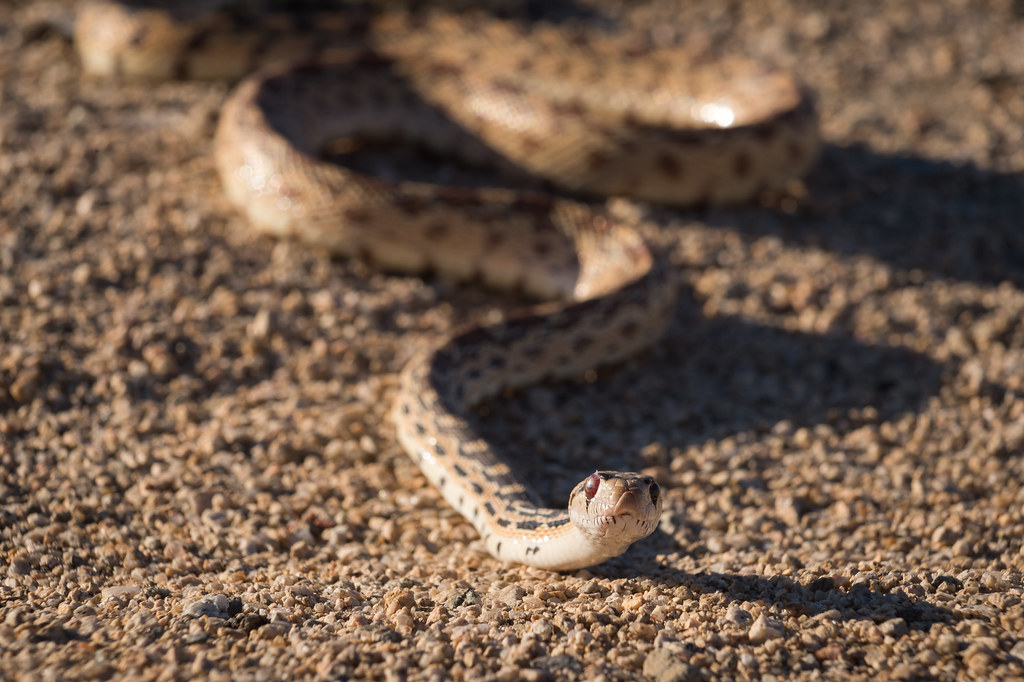
The consistency with which snakes return to sleeping spots is significantly influenced by environmental stability and disturbance patterns. In areas with frequent disruptions from predators, human activity, or weather events, snakes typically demonstrate greater flexibility in sleeping location selection. Conversely, in stable environments with minimal threats, location fidelity tends to be stronger and more persistent. This adaptive response allows snakes to balance the security benefits of familiarity against the risks of predictability. Research in urban settings has shown that snakes living near human development typically utilize more diverse sleeping locations compared to their counterparts in undisturbed habitats, suggesting a behavioral adaptation to increased environmental unpredictability. This flexibility demonstrates that sleeping spot selection remains fundamentally tied to safety optimization even when patterns change.
Reproductive Considerations
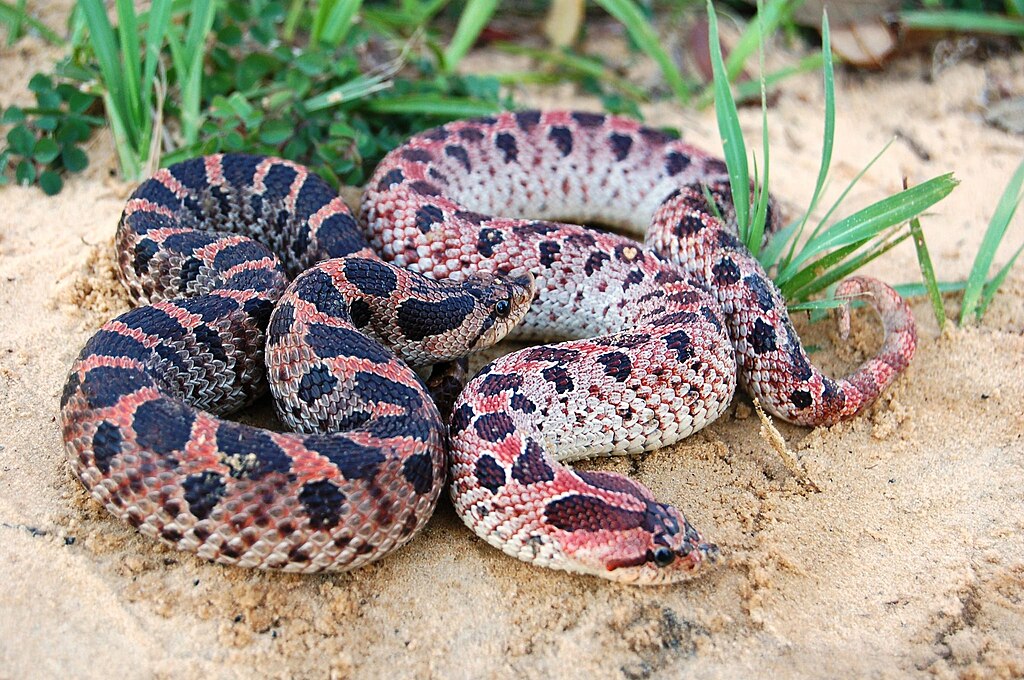
For female snakes, sleeping location choices may be significantly influenced by reproductive status, with gravid (pregnant) individuals often selecting different locations than they would during non-reproductive periods. These specialized sleeping spots typically offer enhanced security, optimal incubation temperatures, and reduced exposure to potential threats. Many female snakes become noticeably more selective about their resting locations during pregnancy, sometimes abandoning long-used sleeping spots in favor of more protected alternatives. In viviparous (live-bearing) species, females may select specific thermal environments that optimize embryonic development, while oviparous (egg-laying) species might choose locations that facilitate easy access to suitable egg deposition sites. This reproductive-driven selectivity explains why snake owners sometimes observe dramatic changes in sleeping preferences when their female pets become gravid.
Social Factors in Communal Species
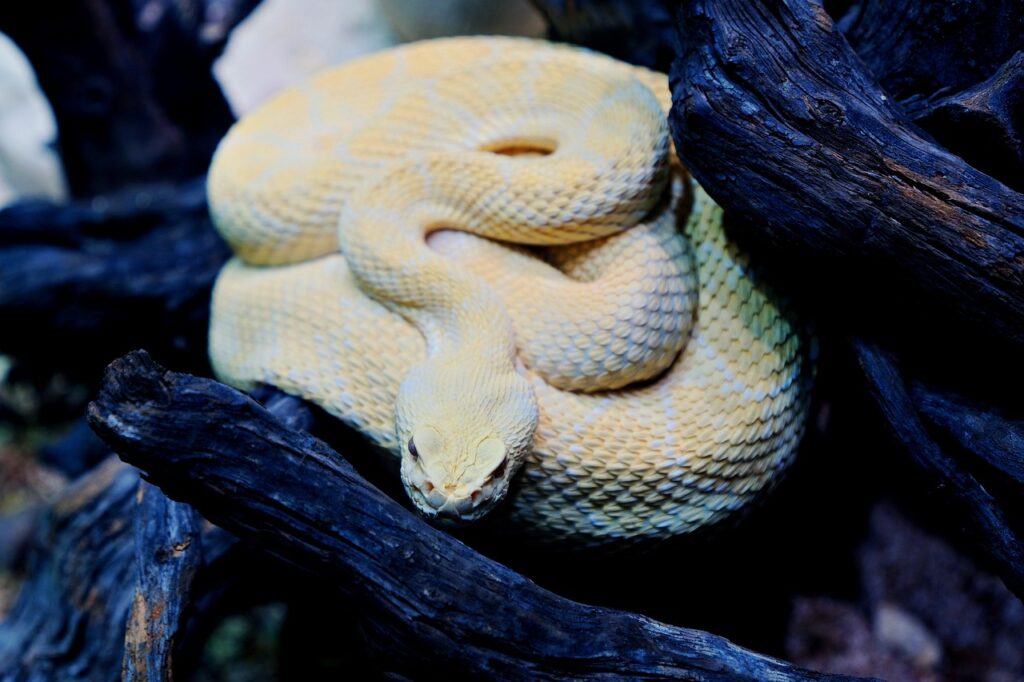
While many snake species are primarily solitary, some demonstrate social behaviors that influence sleeping site selection, particularly during winter brumation or in resource-rich environments. Garter snakes, rattlesnakes, and certain python species are known to share hibernation dens, with multiple individuals returning to the same communal shelters year after year. This social dimension adds another layer to sleeping spot fidelity, as the presence of conspecifics (members of the same species) can provide additional security benefits through increased vigilance and thermal advantages through shared body heat. Research on timber rattlesnakes has documented matrilineal den sharing, where related females return to ancestral hibernation sites across multiple generations, suggesting a potential cultural transmission of sleeping location knowledge. These social considerations highlight that sleeping spot selection isn’t always an individual decision but can be influenced by population-level factors.
Implications for Snake Keeping and Conservation

Understanding why snakes demonstrate sleeping spot fidelity has important applications for both captive husbandry and wild conservation efforts. For pet owners, recognizing the importance of stable, secure resting locations can significantly improve snake welfare and reduce stress-related health issues. Providing multiple appropriate hiding spots while allowing snakes to establish preferred locations without frequent disturbance represents best practice in reptile keeping. From a conservation perspective, protecting known hibernation sites and key habitat features that serve as consistent sleeping locations should be prioritized in management plans. When relocating problem snakes or reintroducing captive-bred individuals, creating familiar microhabitat features similar to their preferred sleeping environments can improve establishment success. This knowledge also explains why habitat fragmentation is particularly damaging to snake populations, as it may disconnect individuals from proven, safe sleeping locations they’ve relied on for years.
Conclusion

The tendency for snakes to return to the same sleeping spots represents a sophisticated behavioral adaptation that balances security, energy efficiency, and physiological needs. Far from being a simple habit, this location fidelity reflects millions of years of evolutionary refinement and demonstrates the remarkable cognitive abilities of these often-misunderstood reptiles. Whether in the wild or captivity, a snake’s preference for particular sleeping locations provides a window into its perception of safety, comfort, and environmental suitability. By appreciating the complex factors driving these preferences, we gain not only scientific insights but also practical knowledge that can improve conservation efforts and captive care practices. The next time you observe a snake consistently returning to the same hiding spot, remember that this behavior represents not mere reptilian stubbornness but rather an elegant survival strategy finely tuned by natural selection.

